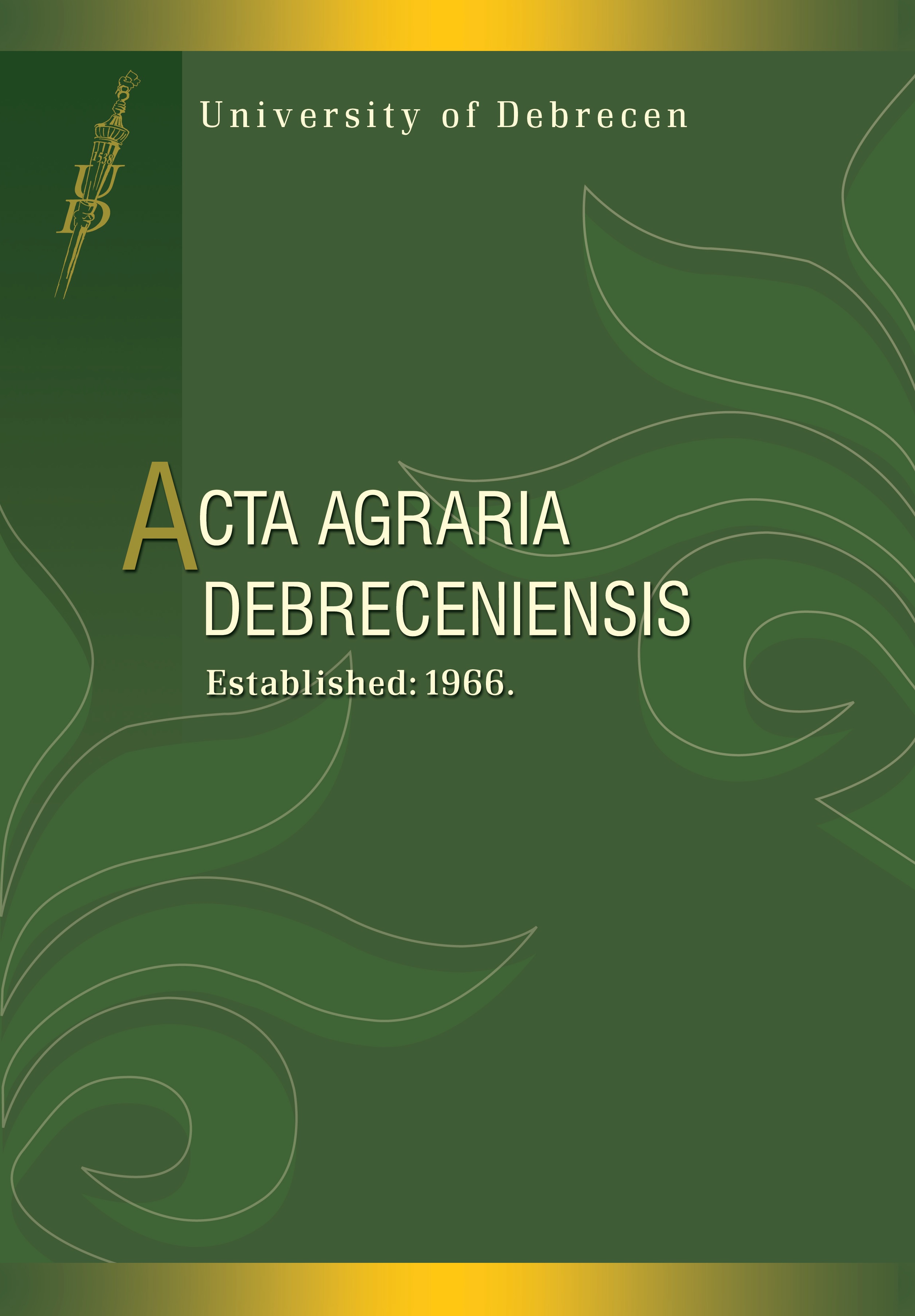Nutrient and water utilisation analyses of maize on chernozem soil in a long-term field experiment
Authors
View
Keywords
How To Cite
Abstract
We have conducted our research at the Látókép Research Farm of the University of Debrecen RISF Centre for Agricultural and Applied Economic Sciences during the cropyears of 2007, 2008 and 2009, on chernozem soil. In the case of crop rotation three models were set (mono-,bi- [wheat, maize] and triculture [pea, wheat, maize]). The five nutrient levels applied during the treatments were as follows: control [untreated], N60P45K45, N120P90K90, N180P135K135, N240P180K180. The conclusion of our results was the following: the crop rotation, the nutrient supply and the amount of precipitation all influenced the quantity of maize yield. As an effect of the increasing nutrient doses yield increase was experienced compared with the control treatments. In the average of the years the highest increase in yield excess/1 kg of NPK fertilizer was measured in the case of the monoculture (13 kg ha-1). As a consequence of is soil extorting effect the monoculture responded more intensively to the nutrient supplementation than the biculture or the triculture in the studied cropyears. In addition, we have observed that the three-year average yield amount per 1 mm precipitation was significantly influenced by the nutrient reserve of the soil. In the monoculture during the control treatment this value was 25 kg mm-1, the value measured in the case of the biculture turned out to be more favourable (42 kg mm-1).

 https://doi.org/10.34101/actaagrar/52/2105
https://doi.org/10.34101/actaagrar/52/2105